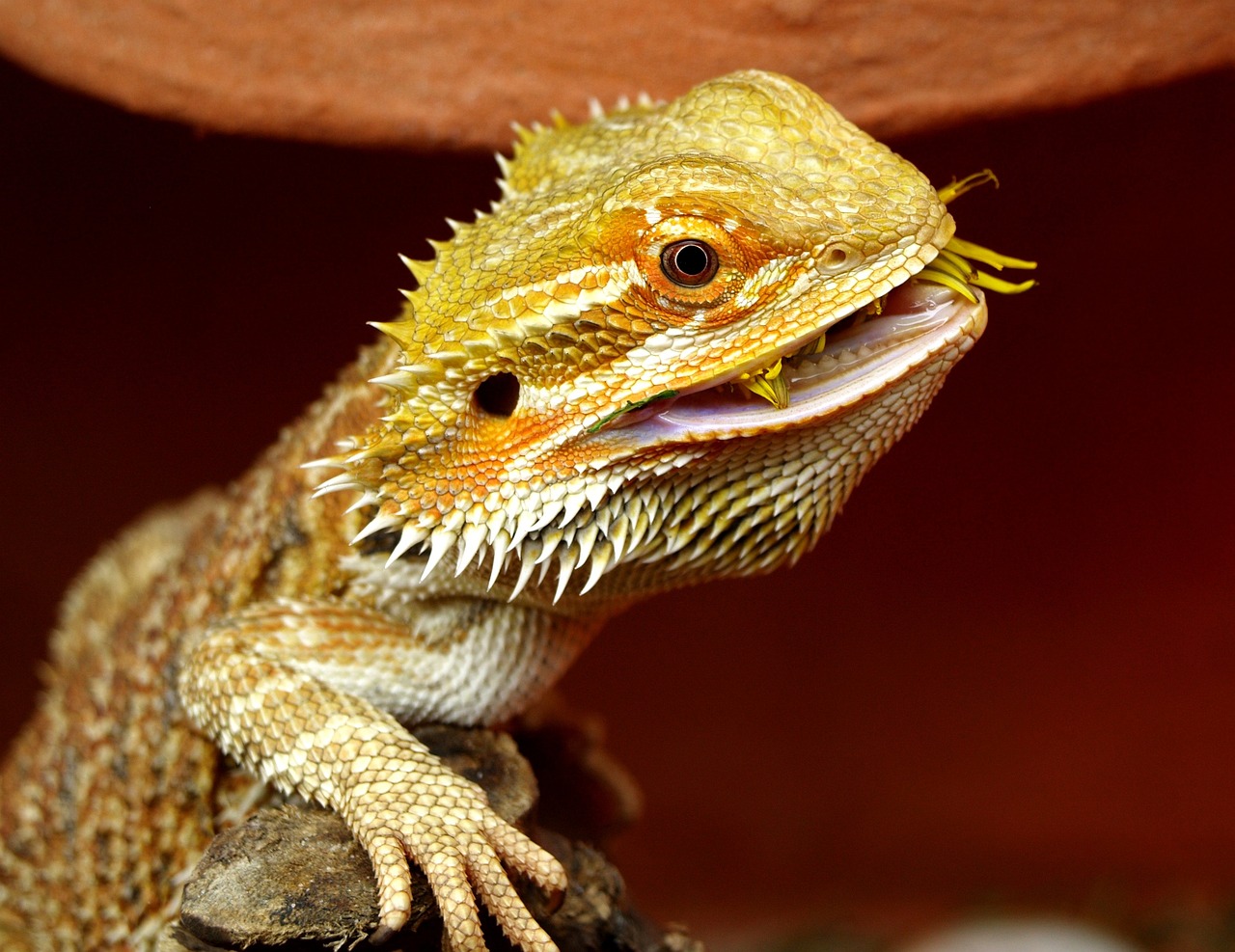The Ultimate Bearded Dragon Care Guide for Beginners

Thinking about adding a bearded dragon to your family? These unique reptiles are popular pets thanks to their docile nature and fascinating behaviors, but they also require specialized care to thrive. This guide will cover everything you need to know about keeping your bearded dragon happy, healthy, and well-cared for!
1. Setting Up the Perfect Enclosure
Bearded dragons are native to the deserts of Australia, so they need a warm, dry environment to mimic their natural habitat. Here’s what you need to create a comfortable enclosure:
- Tank Size: A single adult bearded dragon needs at least a 40-gallon tank, though a 75-gallon tank is even better for space to roam.
- Lighting: Proper lighting is essential for bearded dragons. They need both UVA and UVB light to regulate their sleep-wake cycle and absorb calcium.
- UVB Light: Place a UVB tube light across the top of the enclosure, covering about two-thirds of it, and make sure to replace the bulb every six months to keep the UVB levels effective.
- Basking Light: Bearded dragons are cold-blooded, so they need a basking area to regulate their body temperature. Use a heat lamp to create a basking spot of 95-110°F.
- Temperature Gradient: Create a temperature gradient in the tank. The cool side should be around 75-85°F, while the warm side should be closer to 95-100°F during the day.
2. Substrate Choices: What’s Safe?
The substrate, or floor covering, you choose for your bearded dragon’s enclosure can impact their health. Here are some options:
- Best Choices: Non-loose materials like reptile carpet, paper towels, or tile are safe and easy to clean.
- Avoid: Loose substrates like sand, wood chips, and gravel, as these can be ingested and cause health issues.
3. Feeding Your Bearded Dragon
Bearded dragons are omnivores, meaning they eat both plant and animal matter. Their diet will vary depending on age:
- Baby Dragons (0-6 months): About 80% protein (live insects like crickets or dubia roaches) and 20% vegetables. Feed babies multiple times per day.
- Juvenile Dragons (6-12 months): A mix of 60% protein and 40% vegetables. They should eat once or twice a day.
- Adult Dragons (12+ months): About 20% protein and 80% vegetables, fed once a day.
Recommended Foods
- Protein: Dubia roaches, crickets, and occasionally mealworms (sparingly, as they are high in fat).
- Vegetables: Collard greens, mustard greens, dandelion greens, bell peppers, and squash.
- Fruits (in moderation): Apples, berries, and melons can be given as an occasional treat.
Note: Always gut-load insects (feed them nutrient-rich foods) before offering them to your dragon. Also, dust protein sources with calcium powder to prevent metabolic bone disease.
4. Hydration and Bathing
Bearded dragons get most of their hydration from their food, but it’s still important to provide a shallow dish of fresh water in their enclosure.
- Bathing: Regular baths help with hydration and shedding. Fill a shallow container with lukewarm water and let your dragon soak for about 15-20 minutes once or twice a week.
5. Handling and Socialization
Bearded dragons are generally calm and tolerant of handling. Here are some tips for safe interactions:
- Start Slowly: Begin with short handling sessions to build trust. Gently scoop them up from under their belly to avoid startling them.
- Stay Calm: Move slowly and speak softly to keep them relaxed.
- Avoid Stress: Be mindful of any signs of stress, like a darkened beard or fast movements. If your dragon seems anxious, give them a break.
6. Common Health Issues to Watch For
Bearded dragons can experience health problems. Here are some common issues:
- Metabolic Bone Disease: Caused by a lack of calcium or UVB light. Symptoms include soft bones, twitching, or deformities.
- Respiratory Infections: Bearded dragons can develop respiratory issues if their enclosure is too humid. Signs include wheezing, mucus, or trouble breathing.
- Parasites: Sometimes, they may get parasites, especially if they’re stressed. If you notice abnormal stool or loss of appetite, consult a reptile vet.
7. Shedding Process
Bearded dragons shed periodically. Here’s how to help:
- Signs of Shedding: Their skin may become dull or flaky.
- Assistance: Don’t peel the skin off; instead, offer warm baths to help loosen it.
Final Thoughts
Owning a bearded dragon can be a rewarding experience, but it requires a commitment to proper care and attention. By setting up a suitable enclosure, providing a balanced diet, and monitoring their health, you’ll ensure a happy, healthy, and friendly pet for years to come. Bearded dragons can live 10-15 years with proper care, so following these tips will help you and your dragon form a bond that lasts a lifetime.
Have questions or need help with your bearded dragon’s care? Leave a comment or reach out – we’re here to help make your bearded dragon journey a success!
